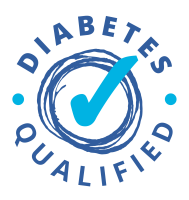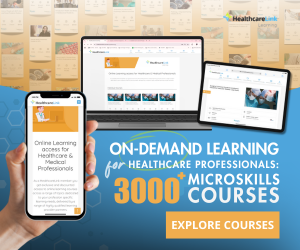Diabetes in Practice for Nurses




Practical Diabetes for Nurses is a comprehensive online course designed for Nurses who would like to refresh and extend their knowledge of diabetes and improve their support to people in their care.
The course is developed by healthcare professionals and expert Credentialled Diabetes Educators who work closely with people living with diabetes. It is based on current best practice guidelines and principles.
Practical Diabetes for Nurses is endorsed by the Australian Primary Health Care Nurses Association (APNA) for 12 continuing professional development (CPD) hours.
After completing the course you will:
- Understand the importance of diabetes education and how to convey diabetes as a serious health problem in Australia.
- Have a comprehensive overview of diabetes, including symptoms, diagnosis, treatment and management principles.
- Know how to identify risk factors of type 2 diabetes and principle actions to take to delay diabetes development.
- Be able to describe key factors that affect blood glucose levels and recall key blood glucose targets for both type 1 and type 2 diabetes with reference to national guidelines.
- Know how to screen and treat mild, moderate and severe acute diabetes complications (hypoglycaemia and hyperglycaemia)
- Be able to describe chronic complications of diabetes such as microvascular, macrovascular, oral and mental health complications.
- Understand the importance of meaningful monitoring, including correct technique, equipment and the benefits of Blood Glucose Monitoring for the different types of diabetes.
- Know how key actions of common oral medications are used in diabetes management, describing possible side-effects with particular reference to hypoglycaemia.
- Understand the importance of positive language and communication to build rapport, trust and support behaviour change strategies in people living with diabetes.
Module 1: Introduction
- Recognise that diabetes is a significant health problem in Australia and why it is important to follow this training.
Module 2: Diabetes explained
- Describe diabetes – identify the key underlying problems that cause all types of diabetes and name the three main types of diabetes.
- Discuss prevalence, cause, prevention, presentation and management of type 1, type 2 and gestational diabetes.
- Explain normal glucose metabolism and the signs and symptoms of diabetes.
Module 3: Risk factors for diabetes
- Identify risk factors for developing type 2 diabetes.
- Explain key actions to delay the onset of type 2 diabetes in people at risk.
Module 4: Blood glucose levels
- Recall what healthy blood glucose, hypoglycaemia and hyperglycaemia are.
- Describe key factors that affect blood glucose levels.
- Recall the target blood glucose levels for people with type 1 diabetes.
- Recall the target blood glucose levels for people with type 2 diabetes.
- Define what the HbA1c test is used for and what the target HbA1c range is.
Module 5: Acute complications - hyperglycaemia
- List the signs and symptoms and causes of hyperglycaemia and how it is managed.
- Describe what diabetic ketoacidosis is and the factors that cause it.
Module 6: Acute complications - hypoglycaemia
- List the signs and symptoms and causes of hypoglycaemia and how it is managed.
- Describe the treatment and management for mild, moderate and severe hypoglycaemia.
Module 7: Chronic complications
- Describe the various complications of diabetes including chronic microvascular and macrovascular complications and mental health complications.
Module 8: Blood glucose monitoring
- Explain the benefits of blood glucose monitoring for people with type 1, type 2 and gestational diabetes.
- Describe the equipment and key considerations for choosing the most appropriate blood glucose meter or lancing device.
- Discuss the correct technique and most useful times to do a blood glucose level check.
- Recognise the importance of safe sharps disposal and describe how sharps should be disposed of.
Module 9: Living well with diabetes
- Describe how diabetes can be managed and the purpose and individual roles that comprise a Diabetes Care Team in supporting a person with their diabetes management.
- Discuss the legislation in relation to people with diabetes obtaining a driver’s licence as well as the guidelines around travel for people with diabetes
Module 10: Healthy eating
- Describe the Australian Guide to Healthy Eating, the plate model and additional recommendations for people living with diabetes.
- Explain the impact of carbohydrates on blood glucose levels and give examples of food sources of carbohydrates and their role in healthy eating.
- Describe what kilojoules are and how they contribute to weight management.
- Discuss what glycaemic index (GI) is and give examples of low-GI foods.
- Describe the four types of dietary fats and give examples of food sources and their effect on heart health and weight management.
- Describe the impact of alcohol on diabetes and weight management. Discuss standard drink sizes and tips to help people reduce their consumption with reference to the NHMRC Low Risk Drinking Guidelines.
- Recognise the significance of modest weight loss in overweight people can significantly reduce insulin resistance.
Module 11: Physical activity
- Describe the benefits of physical activity for diabetes management with reference to the Australian Guidelines for Physical Activity.
- Explain safety precautions people with diabetes should take before starting a physical activity program.
- Discuss the link between physical activity and low blood glucose levels.
Module 12: Medications
- Describe key actions of common oral medication groups used in diabetes management, including mechanisms of action and possible side-effects such as hypoglycaemia.
- Explain the key action of insulin and why someone with type 2 diabetes might be prescribed insulin.
Module 13: Prevention and detection of complications
- Describe what the Annual Cycle of Care is and how it can reduce the risk of chronic complications.
- Explain the tests and reviews involved in the Annual Cycle of Care, including the importance of daily foot care, podiatry checks and dental check-ups.
- Recognise the emotional and psychological impact of diabetes on those living with the condition and their family.
Module 14: NDSS, diabetes organisations and Medicare
- Describe what the NDSS is, eligibility and registration process and the benefits of registration.
- Explain what diabetes organisations such as Diabetes Australia are, the membership process and how they support people living with diabetes.
- Describe the Medicare entitlements available for people living with type 2 diabetes.
Module 15: Supporting behaviour change
- Describe the ‘Stages of Change’ behavioural change model and how it relates to supporting positive behaviour change in people living with type 2 diabetes.
- Explain how to set SMART goals for behaviour change.
Module 16: Talking the talk
- Describe the type of language used to engage and support people living with diabetes and explain the types of positive words that can be used to build rapport and trust with a person living with diabetes.
I feel heaps more confident now as my knowledge has increased in all aspects of diabetes care and management. I am confident to talk to people with diabetes about their medications, side effects, diet, exercise, things to avoid, acute and chronic complications. And I feel more confident to do this in a way that is non-judgmental and I have a much greater understanding of some of the challenges of what it would be like living with diabetes.
This course taught me a great deal about diabetes, but also how to work with
people living with it as a supportive health professional.
I will be recommending this course to my colleagues!
- NiPHC Transition to Practice Program
- Posted By APNA - Australian Primary Healthcare Nursing Association - Transition to Practice Program
- Posted Date: 2024-11-28
- Location:Online
- Transition to Practice Program: helping nurses make the move into primary health care.
- Non-pharmacological Approaches to the Management o...
- Posted By eIntegrity Healthcare e-Learning
- Posted Date: 2024-11-28
- Location:Online
- This session presents a wide spectrum of non-pharmacological approaches to the management of chronic...
- Medications and Older Adults course
- Posted By eIntegrity Healthcare e-Learning
- Posted Date: 2024-11-28
- Location:Online
- This session describes the physiological changes that occur with ageing and the effects these change...
- Common Pain Conditions in Older People course
- Posted By eIntegrity Healthcare e-Learning
- Posted Date: 2024-11-28
- Location:Online
- This session describes some of the most common conditions that cause pain in older people, the manag...
- Assessment of Pain in Older Adults course
- Posted By eIntegrity Healthcare e-Learning
- Posted Date: 2024-11-28
- Location:Online
- This session describes the assessment of pain in older adults and the range of assessment tools avai...



